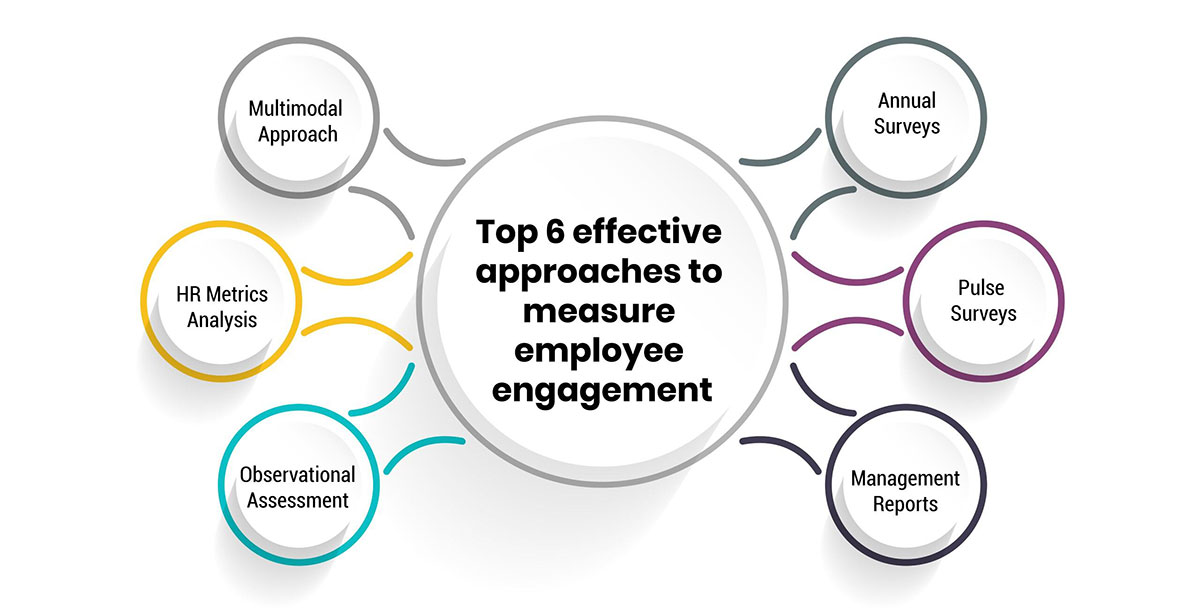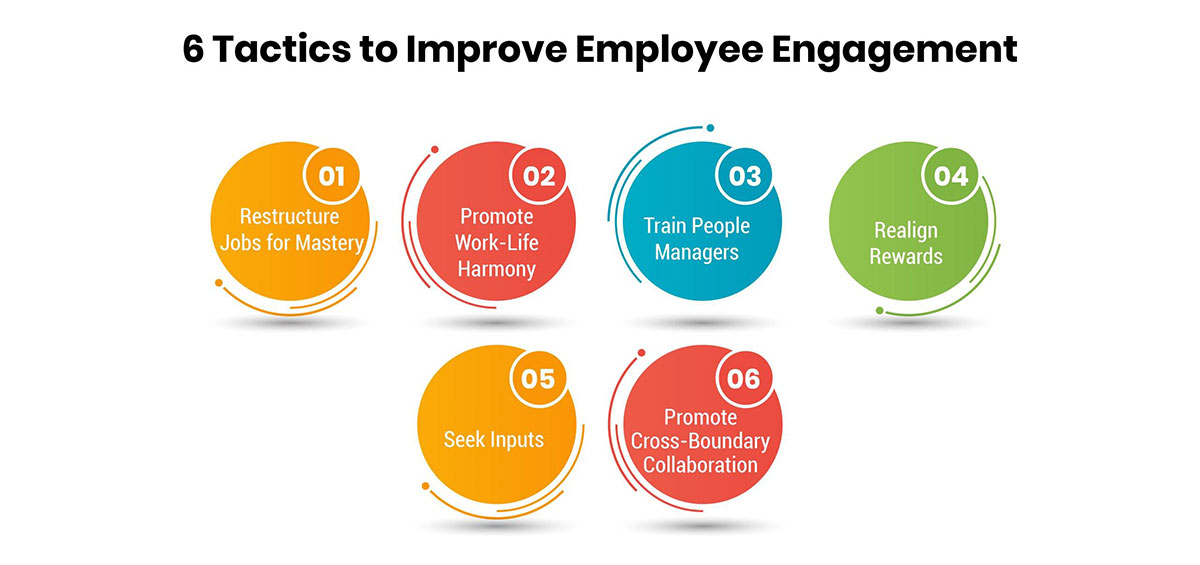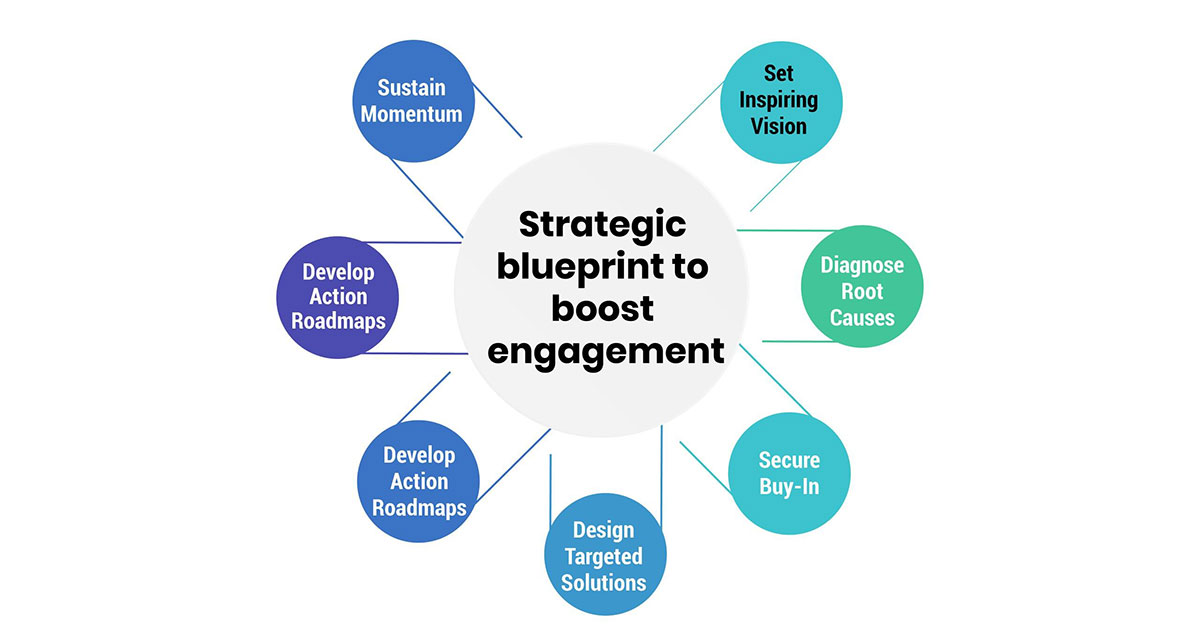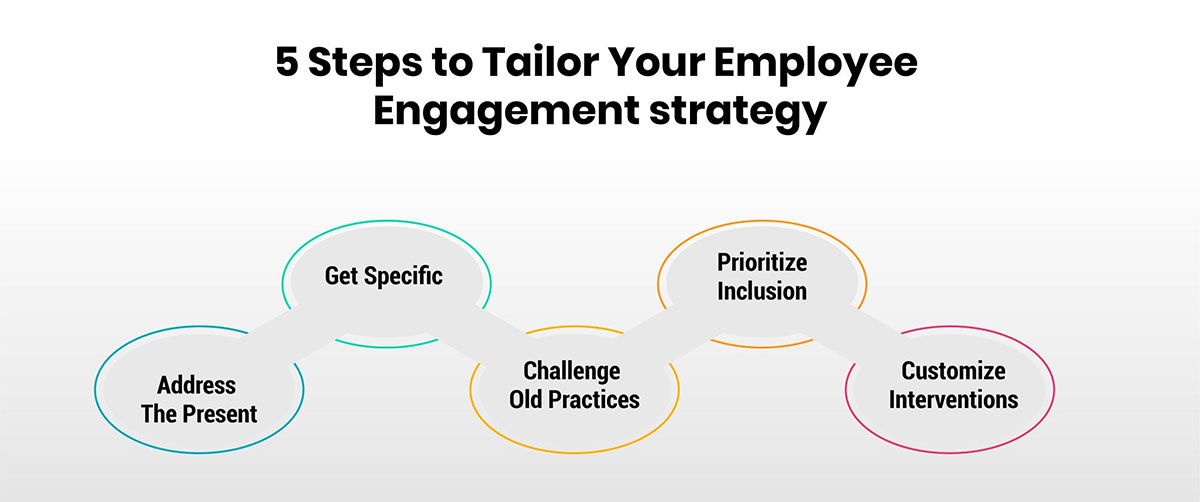
Engaged employees are invaluable assets driving organizational success through heightened productivity, innovation, retention, and customer satisfaction. Gallup estimates reveal that actively disengaged staffers cost US $450 billion to $550 billion yearly via lost productivity.
This blog on employee engagement strategies explores why engagement matters, techniques to measure it, leading drivers shaping it, tactics to improve it across functions, and impactful technologies supporting it. Additionally, it offers a comprehensive engagement strategy creation blueprint along with a tailored approach guiding HR teams to undertake this vital culture transformation journey.
The term “employee engagement” refers to the emotional commitment staff feel toward an organization and its goals, motivating them to invest additional discretionary effort beyond contractual responsibilities. It measures the passion and energy employees bring to work and devote toward aiding their organization’s success.
Engagement encompasses various interconnected elements, including workplace satisfaction, motivation, commitment, advocacy, and pride. It directly links to productivity, retention, and innovation powered by human capital - an organization’s most valued asset.
Four types of employees exist based on their perceived attitudes and efforts:
Beyond conceptual relevance, statistically validated evidence confirms employee engagement’s tangible business impacts, justifying heightened CXO (Chief Experience Officer) focus.
Key metrics proving why engagement matters:
Such consistent hard data validates employee engagement’s immense capacity to meaningfully enhance workplace cultures and fuel desired performance. Thus, the adoption of appropriate engagement strategies merits immense focus.
The strategic adage “What gets measured gets improved” fully applies to elevating workforce engagement. However, the measurement itself remains severely underutilized - a mere 26% of companies frequently measure engagement. Top approaches to measuring employee engagement include:

Confidential organization-wide surveys gauging attitudes and sentiments represent the most common tactic - 70% of companies rely on annual polls. However, annual assessments fail to reflect evolving dynamics.
More frequent, succinct pulse checks through short sentiment polls provide real-time insights on recent developments’ cultural impact. Pulse survey flexibility allows precise targeting - like gauging integration success after a major acquisition.
Managers closest to ground realities can provide monthly subjective analyses on team engagement levels and hypothesized drivers through systematized reporting mechanisms. However, reliability issues exist with executive assessments alone.
Independent internal or external experts can derive employee engagement levels through scientific observational analysis during informal work interactions, meetings, water cooler conversations, etc., tracking variables like energy, enthusiasm, and frustration cues. However, scalability challenges arise with large workforces.
By aggregating and analyzing HR metrics like attrition frequencies, uptake of benefits, and utilization of incentives, sentiment levels are quantifiably inferred without direct teammate involvement. However, data intricacies pose analysis hurdles.
Each evaluation method boasts distinct merits and limitations. Thus, conjunctionally deploying annual surveys, periodic pulse reviews, manager estimations, and HR data assessments can provide comprehensive, reliable insights on enhancing engagement.
Measurement offers visibility, but sustainable gains require identifying and activating the right drivers based on predictive engagement models.
The single biggest contributor to engagement remains the working environment, which spans leadership quality, workplace policies, peer bonding, infrastructure, etc. McKinsey notes engaged teams boast well-connected members who identify with company values.
Learning new skills and belief in probable career advancement strongly predicts engagement. Opportunities to develop mastery and progress outstrip base pay as drivers among top talent.
An empathetic, ethical, and empowering people-manager style keeps employee’s content and motivated. The adage “staff leave bosses more than jobs” powerfully captures frontline leadership’s profound role in shaping engagement.
Public acknowledgment of efforts through financial and non-financial incentives, including promotions and praise, nurtures feelings of engagement. However, caution must be exercised so as not to inadvertently demotivate overlooked peers.
Techniques allowing participation in solving challenges facing a company make staff feel valued, plugged into the mission, and thus engaged. Empowerment to try new ideas sans excessive oversight also nurtures innovation, advancing progress.
Together, such elements constitute a balanced ecosystem that supports the symbiotic employee-organization partnership that is fundamental to a thriving workplace.
While HR teams principally drive engagement initiatives, success requires cross-pollination across departments - each plays a role.
Together, such a distributed yet aligned structure for elevating employee sentiment promises sustainable gains.
Based on predictive engagement drivers, the following are potent interventions boosting workplace positivity.

Roughly 80% of employees feel they have fewer opportunities and are constrained by narrow job scopes. Providing project rotations and assignments allowing people to upskill promises engagement via mastery.
Burnout remains a key churn driver from overwork. Thus, policies supporting healthier lifestyles, like hybrid schedules, nap rooms, and stipends for physical activities, positively sway engagement.
Since the number one reason for leaving remains poor supervisory relationships, coaching people managers on empathy, motivation, and development techniques fosters engagement and retention.
Public recognition Write peer-nominated ‘Spot Awards’ for notable recent contributions, Informal ‘Shout Outs’ during meetings for good work, and formal Long-Service Awards ceremonies cherish employee efforts - incentivizing engagement.
Channels soliciting bottom-up suggestions - like Hackathons to crowdsource innovations, Townhalls to openly discuss concerns, and Anonymous Feedback avenues promise insights for enhancing workplace experience - making employees feel heard and involved.
Silo-busting initiatives like cross-functional projects, external expert speaker sessions, job shadowing, mentorships, and job rotations expand perspectives and inter-team bonding - amplifying engagement.
Such interventions covering various facets of the workplace, when consistently deployed, help transform cultures to become engaging, dynamic, and rewarding for all.
While rooted in constructive leadership and people practices, technology plays an invaluable role in supporting employee engagement across three key stages:
Robust, purpose-built technologies structuring otherwise nebulous culture enhancement processes thus generate momentum aiding HR’s transformative efforts.
With meaningful insights uncovered from assessments and supportive digital systems deployed, impact requires structured gameplans capitalizing fully on discovered opportunities.
Here is a strategic blueprint to boost employee engagement.

Rally leadership will paint a vivid portrait of the sought vibrant and engaging workplace end-state and pique everyone’s aspirations through charismatic communication channels.
Via commissioned evaluation reports, town hall discussions, and focus group studies - unearth pain points detracting from positive workplace experience and enumerate specific irritants needing resolve.
Get budget commitments from leadership and middle managers willing to sponsor tactical interventions seeking voluntary participation by announcing incentives for pioneer teams.
Create specialized interventions addressing diagnosed engagement detractors with control teams set up to gauge the measurable impact on sentiment upticks.
For example, if career growth barriers limit engagement, interventions around job rotations, internal gig opportunities, mentorships, etc., may be deployed after hypothesizing the probable impact.
Codify detailed implementation plans enumerating tasks, owners, dependencies, costs, and milestones tracking for smooth execution with proper risk analysis and mitigation steps outlined.
Structure the roadmaps covering short-term (<6 months), medium-term (6-18 months), and longer-term (18-36 months) windows to balance urgency with proper change management.
With all building blocks in position - testing teams formed, budgets allocated, and roadmap activated - precise monitoring allows identification of highly impactful interventions for expanded rollout while recalibrating or halting ineffective elements to propel towards the envisioned future state.
Via periodic refresh surveys, new idea competitions, ongoing manager training, and monthly reviews - the momentum achieved through early wins must be sustained while tackling incremental frontiers like automation, transfer learning, and external community building around elevated engagement.
Combined, these structured steps promise to realize the sought-after workplace vibrancy and human potential unlocking derived from leading with bold and empowering engagement strategies.
While elaborate engagement theories help set direction, practical application demands customization, balancing idealism with ground realities since mono solutions scarcely exist for heterogeneous organizations.
Principles for pragmatically enhancing workforce engagement include:

Meet employees where they are currently versus pontificating lofty but distant end states. Bring quick yet meaningful changes employees directly experience to establish credibility driving sustained transformation.
Avoid generic calls for culture change through repetitive calls for ‘increased transparency’ or ‘better collaboration’, which confuse more than inspire. Laser focuses on 3-4 explicit, achievable changes that become rallying calls.
Rather than blindly relying on off-the-shelf best practice checklists, be bold when challenging legacy policies or programs that negatively impact sentiment. Reassess fixed paradigms to raise engagement.
However robust an intervention, if segments feel excluded or underrepresented during design or rollout phases, engagement declines among groups feeling alienated or slighted - requiring inclusive co-creation.
Teams, generations, and geographies boast unique needs. Resist one-size-fits-all solutions in favor of tailored engagement initiatives aligning with group-specific requirements and constraints to uplift all ships.
By internalizing such principles, the engagement strategy design process itself evolves into an uplifting, inclusive experience marked by co-created aspirations backed by pragmatic roadmaps promising scaled wins.
Across enterprises, employee engagement is transitioning from a fuzzy hype term to a quantifiable business lever commanding strategic focus in 25% currently per Gallup. However, most firms still underestimate human capital dynamics’ immense capacity to impact outcomes.
They thus risk ceding competitive advantage to wiser rivals who embrace rich, textured engagement-promoting practices, unlocking workforce potential and translating this human transformation into commercial success markers in an age where engaged teams constitute the #1 differentiator.
With insights now on why engagement merits priority, what sways it, how it elevates organizational health, and which frameworks maximize its dividends - purposeful adoption of highlighted best practices paves the way for a thriving future assured by engaged, empowered employees positioned to unlock their promise.